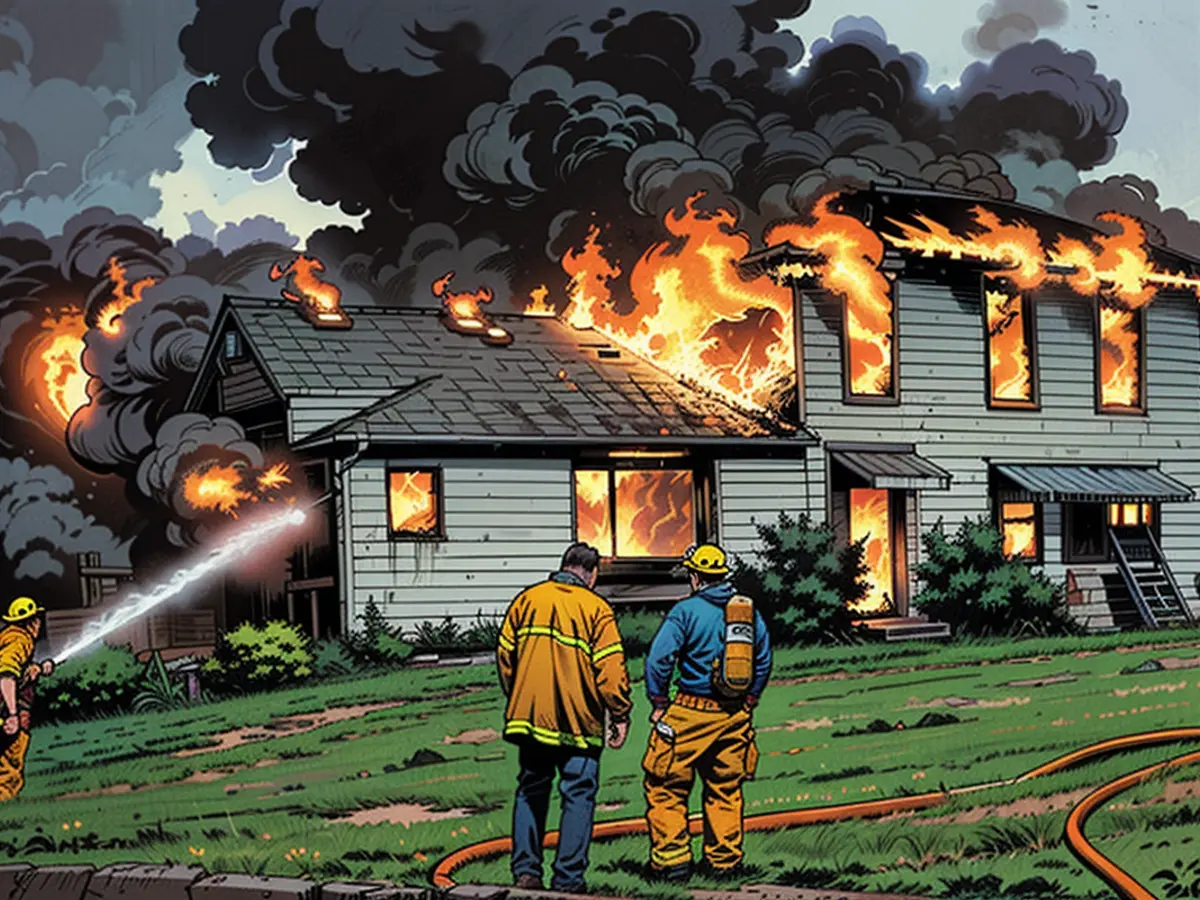8 Strategies for Enhancing Fire Resistance in Your House
Just like me, if you're someone who frequently worries about how your home could just vanish in an instant, you've probably thought about the dangers of fire. The U.S. alone experienced over 374,000 residential fires in 2022. Did you know almost half of these fires start in the kitchen? And you don't need a wildfire to see your home turn into a charred mess.
The good news is, there are some simple and budget-friendly ways to make your home less susceptible to fires. You can start with:
Paints, spray, and coatings
Fire needs fuel to burn, and let's face it, your home is a house made of fuel. Almost everything in your house - particularly a wood-framed house - is ready and willing to burn once the flames arrive.
- Fire-retardant paint: One option to slow down the spread of fire is to use paint that is fire resistant. These paints, known as intumescent paint, create a protective coating (or "char") once they encounter flames. This coating prevents the fire from spreading. If you need to paint your house, why not choose fire-resistant paint?
- Fabric spray: Another option is to use a fire-resistant fabric spray on your curtains, upholstery, carpets, etc. This can delay a fire spreading within your home. Just make sure to test it first to ensure it doesn't damage your belongings.
- Exterior materials: Choosing fire-resistant materials for your siding, such as cement, stucco, brick, or metal, will create more durable barriers against exterior flames spreading to your home. If your house has wooden siding, there are coatings available that can significantly improve its fire resistance, but note that you'll need to reapply them every few years.
- Roofing materials: The more fire-resistant your roofing materials, the better protected your home will be. Class A roofing materials, which include clay, concrete, slate, and metal roofs, are the most fire-resistant. However, if you're not ready to replace your roof right now, there are coatings you can apply to make your existing roof fire resistant while also protecting it from other elements like the sun and weather.
Keep your home clear of debris
Even if your area isn't prone to wildfires, you can still help prevent your home from being engulfed in flames by creating a firebreak around it. This can involve clearing away debris, like dead leaves, branches, or other flammable materials. Trimming trees to ensure they don't touch the roof is an extra step that can reduce the likelihood of your home catching fire through flames from another house.
Building materials
- Fire-resistant windows and doors: If you want to further secure your home against the threat of fire, consider replacing your front door with a 90-minute fire door (like this one) and installing fire-rated, heat-reflecting windows (like these). While these improvements might not come cheap, they can stand up to the extreme heat of a fire for longer than your standard windows and doors, potentially giving the fire department the time they need to put out the flames.
- Fire-resistant insulation: Standard fiberglass insulation isn't flammable, but the paper backing it often is. Choosing materials like mineral wool for home improvements that will involve opening walls or ceilings can contribute to making your home a bit more fireproof.
- Spark management: As fires often spread through sparks or embers, using a chimney cap with a spark arrestor and ember-resistant vents can prevent embers from entering your home. And cleaning your dryer vent, which is basically a pile of kindling waiting to happen, is another simple step to make your home a bit more fireproof.
Remember, these are just a few small adjustments you can make to your home to make it a bit more fire resistant. Start with the changes you're comfortable with, and slowly add protections as your budget allows. Your house will thank you.
Read also:
After learning about the dangers of kitchen fires and the importance of fire resistance in your home, you might consider investing in a more fireproof living space. Instead of using regular paint, you could opt for fire-retardant paint, also known as intumescent paint, which creates a protective char when exposed to flames, helping to slow down the spread of fire. Furthermore, applying a fire-resistant fabric spray on your curtains, upholstery, and carpets can also contribute to delaying the spread of fire within your home. So, why not make your home more fireproof? By making this change, your home would become 'home more fireproof'.








